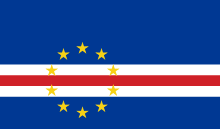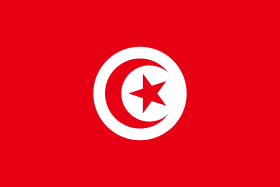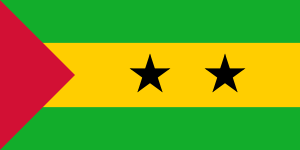Aveiro, Portugal
| Aveiro | |||
|---|---|---|---|
| Municipality | |||
|
Aveiro's canal | |||
| |||
 | |||
| Coordinates: 40°38′N 8°39′W / 40.633°N 8.650°WCoordinates: 40°38′N 8°39′W / 40.633°N 8.650°W | |||
| Country |
| ||
| Region | Centro | ||
| Subregion | Baixo Vouga | ||
| Intermunic. comm. | Região de Aveiro | ||
| District | Aveiro | ||
| Parishes | 10 | ||
| Government | |||
| • President | José Ribau Esteves (PSD-CDS) | ||
| Area | |||
| • Total | 197.58 km2 (76.29 sq mi) | ||
| Population (2011) | |||
| • Total | 78,455 | ||
| • Density | 400/km2 (1,000/sq mi) | ||
| Time zone | WET/WEST (UTC+0/+1) | ||
| Website | http://www.cm-aveiro.pt | ||
Aveiro (Portuguese pronunciation: [aˈvejɾu] or Portuguese pronunciation: [ɐˈvɐjɾu]) is a city and a municipality in Portugal. The population in 2011 was 78,450,[1] in an area of 197.58 km².[2] It had 61,430 eligible voters in 2006. It is the second most populous city in the Centro Region of Portugal, after Coimbra. However, the city of Aveiro together with neighbouring Ílhavo, make one conurbation which has a population of about 120,000 inhabitants, making it one of the most important by population density in the Centro Region. The municipality is composed of 10 parishes (freguesias), and is the chief city of Região de Aveiro and Baixo Vouga. The present Mayor is José Ribau Esteves, elected by a coalition between the Social Democratic Party and the Democratic Social Centre.
City Information
The seat of the municipality is the city of Aveiro, with about 73,003 inhabitants in the 5 urban city (cidade) parishes. Located on the shore of the Atlantic Ocean, Aveiro is an industrial city with an important seaport. The city of Aveiro is also the capital of the District of Aveiro, and the largest city in the Baixo Vouga intermunicipal community subregion. The University of Aveiro is considered as one of the best of Portugal and 354th best university in the World.[3] Aveiro is also known as "The Portuguese Venice", due to its system of canals and boats similar to the Italian city of Venice. The people's quality of life is very high.[4] The unemployment rate is very low (about 5%). The municipal holiday is 12 May, the day of Joanna, Princess of Portugal.
Transport
Trains: the city is serviced by Alfa Pendular (Lisbon<->Braga; Lisbon<->Oporto; Faro<->Oporto) and Intercity (Intercidades: Lisbon<->Oporto and Lisbon<->Guimarães) trains, Regional trains, Suburban Trains (Urbanos do Porto) and also the Linha do Vouga, a narrow gauge railway to Águeda and Sernada do Vouga.
Boats: moliceiros in Ria for hire to tourists, for fishing purposes and recreational ones like regattas.
Routes/Primary expressways: A 1 (Porto <> Lisbon); A 25 (Viseu <>Guarda <> Vilar Formoso).
Regional Airport: Aerodromo de Aveiro/São Jacinto (LPAV).
Port/Harbour (harbor): Porto de Aveiro (Ílhavo/Aveiro).
Tourism
There are several attractions in the city of Aveiro, including cathedrals, canals and the beaches of the Peninsula de São Jacinto. Attractions near Aveiro include the Ílhavo ceramica de Vista Alegre and the beaches of Barra, Costa Nova do Prado, and Gafanha da Nazaré.
The city of Aveiro has several shopping centers and malls (Pingo Doce Shopping Center, Fórum Aveiro, Glicínias Plaza (Jumbo – Auchan), Aveiro's Shopping Center (Continente & Mediamarkt), Aveiro's Retail Park and the Oita Shopping Center). This city has lots of traditional commerce stores. The most central one being Forum Aveiro with clothes stores, restaurant zone, a book shop and a cinema.
Gastronomy
Aveiro is known in Portugal for its traditional sweets, Ovos Moles de Aveiro (PGI),[5] trouxas de ovos, both made from eggs. Raivas are also a typical biscuit of Aveiro.
History
Mumadona Dias was the first countess of Aveiro. The city dates back at least to the 10th century when it was known by its first Latin name of Alavarium et Salinas, literally, "a gathering place or preserve of birds and of great salt." The Moors invaded and then held it until the 11th century, after which it became popular with Portuguese royalty. The Princess St. Joana, daughter of Afonso V lived in Aveiro (in the Aveiro's Convent) until her death on the 12th May 1490. In the winter of 1575, a terrible storm closed the entrance to its port, ending a thriving trade in metals and tiles. The same storm also created a reef barrier at the Atlantic Ocean.
Industry
The city is also famous for its production of salt and for its seaweed harvest, which is used for fertilizer in the area.
Famous people
The famous explorer João Afonso was born in Aveiro. He was the first European to visit the region of Benin in Nigeria and named the river located there, the Rio Fermoso. He helped to build a fort in Mina. Unfortunately, he never came back to Portugal; he died in the region and is credited for bringing to Lisbon the first pepper that ever came out of those parts. He was also credited as one of the discoverers of the Newfoundland fisheries.
The singer and composer José Manuel Cerqueira Afonso dos Santos (1929–1987) – better known as Zeca Afonso – was born in Aveiro.[6]
The city is also famous for the Convento de Jesus (now known as the City Museum "Santa Joana"), built in the 15th century, which contains the tomb of the daughter of Afonso V, St. Joana, who died in 1490. The presence of this royal personage, beatified in 1693, proved to be of great benefit when she bequeathed her valuable estate to the convent. In the 17th and 18th centuries, the convent housed a school of embroidery, which produced many of the sumptuous pieces kept in the museum.
Aveiro University
The University of Aveiro was created in 1973 and is considered one of the most dynamic and innovative universities of Portugal, [7] attracting thousands of students to the city. The University has about 430 professors (with Ph.D. degrees), 11,000 undergraduate students, and 1,300 post-graduate students.

Sports

Sport Clube Beira-Mar, an association football club. Founded in 1922, it has a sports academy with various youth levels participating in all kinds of sports codes notably in Basketball and Futsal in both National and Provincial levels. The club plays at the Estádio Municipal de Aveiro, designed by Portuguese architect Tomás Taveira for Euro 2004, where it held two group matches.[8]
The other long established club in the city 'Os Galitos' was founded in 1904 and houses a wide variety of sports. Some of its older and stronger sports include basketball and water sports such as swimming, sailing and rowing. Other sections in the club include chess, snooker, pool and billiards among others. Despite all the sections of the club, rowing is the modality in which the club has maintained a long and proud tradition going back more than one hundred years, reaching the highest possible excellence as a club with several of its individual and team of rowers having successfully represented Portugal in international tournaments including the Olympic Games.
Climate
Aveiro has a warm-summer mediterranean climate[9] influenced by its proximity to the Atlantic Ocean. The maritime influence causes a narrow temperature range resulting in summers averaging around 24 °C (75 °F) in daytime temperatures, considerably lower than inland areas on the same parallel on the Iberian Peninsula. As typical of mediterranean climates, summers are dry and winters are wet. A coastal feature is that frosts are rare and never severe. The hottest temperature recored was 39.3 °C (102.7 °F) set in July.[10] Temperatures above 32 °C (90 °F) are extremely occasional, and averages only a couple of times per annum.[11]
| Climate data for Aveiro | |||||||||||||
|---|---|---|---|---|---|---|---|---|---|---|---|---|---|
| Month | Jan | Feb | Mar | Apr | May | Jun | Jul | Aug | Sep | Oct | Nov | Dec | Year |
| Record high °C (°F) | 21.5 (70.7) |
25.0 (77) |
28.9 (84) |
32.5 (90.5) |
39.0 (102.2) |
37.6 (99.7) |
39.3 (102.7) |
38.1 (100.6) |
35.1 (95.2) |
33.5 (92.3) |
26.0 (78.8) |
24.0 (75.2) |
39.3 (102.7) |
| Average high °C (°F) | 14.4 (57.9) |
15.4 (59.7) |
17.5 (63.5) |
18.2 (64.8) |
20.2 (68.4) |
22.8 (73) |
24.0 (75.2) |
24.4 (75.9) |
23.7 (74.7) |
21.1 (70) |
17.4 (63.3) |
15.2 (59.4) |
19.5 (67.1) |
| Daily mean °C (°F) | 10.4 (50.7) |
11.4 (52.5) |
13.3 (55.9) |
14.3 (57.7) |
16.3 (61.3) |
18.9 (66) |
20.1 (68.2) |
20.4 (68.7) |
19.5 (67.1) |
17.1 (62.8) |
13.6 (56.5) |
11.5 (52.7) |
15.5 (59.9) |
| Average low °C (°F) | 6.3 (43.3) |
7.3 (45.1) |
9.1 (48.4) |
10.3 (50.5) |
12.5 (54.5) |
15.0 (59) |
16.1 (61) |
16.2 (61.2) |
15.2 (59.4) |
13.0 (55.4) |
9.8 (49.6) |
7.8 (46) |
11.5 (52.7) |
| Record low °C (°F) | −3.0 (26.6) |
−2.5 (27.5) |
0.0 (32) |
1.5 (34.7) |
5.5 (41.9) |
8.5 (47.3) |
11.4 (52.5) |
10.0 (50) |
8.5 (47.3) |
3.5 (38.3) |
1.0 (33.8) |
−3.0 (26.6) |
−3.0 (26.6) |
| Average precipitation mm (inches) | 119.8 (4.717) |
87.5 (3.445) |
67.2 (2.646) |
91.2 (3.591) |
74.9 (2.949) |
29.3 (1.154) |
13.5 (0.531) |
19.7 (0.776) |
49.3 (1.941) |
128.8 (5.071) |
128.3 (5.051) |
134.5 (5.295) |
944.0 (37.165) |
| Source: Instituto de Meteorologia (1981-2010 climatology) [12] | |||||||||||||
Municipality Demographics
| Population of Aveiro Municipality (1801 – 2008) | ||||||||
|---|---|---|---|---|---|---|---|---|
| 1801 | 1849 | 1900 | 1930 | 1960 | 1981 | 1991 | 2001 | 2008 |
| 14 144 | 10 780 | 24 919 | 31 644 | 46 055 | 60 284 | 66 444 | 73 335 | 73 100 |
Parishes
Administratively, the municipality is divided into 10 civil parishes (freguesias):[13]
- Aradas
- Cacia (town pt.: vila)
- Eixo e Eirol
- Esgueira
- Glória e Vera Cruz (Aveiro city centre)
- Oliveirinha
- Requeixo, Nossa Senhora de Fátima e Nariz
- Santa Joana
- São Bernardo
- São Jacinto
All of the above parishes (freguesias) are considered urban. São Jacinto is located on an eponymous peninsula, between the Atlantic Ocean and Ria de Aveiro.
Gallery
-

Moliceiros of Aveiro.
-

Lighthouse of Aveiro (Praia da Barra).
-

Typical azulejo façades of Aveiro.
-
Street in Aveiro.
-

Aveiro, Portugal
-
A street in Aveiro.
-
A square in Aveiro.
-

Aveiro's streets by night
-

Aveiro, Portugal
-

Aveiro, Portugal
-

Aveiro, Portugal
-

The old railway station
-
Aveiro, Portugal
International relations
Aveiro's sister cities are:
-
 – Viseu, Portugal
– Viseu, Portugal -
 – Bourges, France, since 1989
– Bourges, France, since 1989 -
 – Viana do Castelo, Portugal
– Viana do Castelo, Portugal -
 - Trois-Rivières, Canada
- Trois-Rivières, Canada -
 – Arcachon, France, since 1989
– Arcachon, France, since 1989 -
 - Farim, Guinea Bissau
- Farim, Guinea Bissau -
 – Ciudad Rodrigo, Spain, since 1989
– Ciudad Rodrigo, Spain, since 1989 -
 - São Filipe, Cape Verde
- São Filipe, Cape Verde -
 – Forlì, Italy, since 1990
– Forlì, Italy, since 1990 -
 - Mahdia, Tunisia
- Mahdia, Tunisia -
 – Santa Cruz, Cape Verde, since 1993
– Santa Cruz, Cape Verde, since 1993 -
 - Honfleur, France
- Honfleur, France -
 - Cholargos, Greece
- Cholargos, Greece -
 – Pemba, Mozambique, since 1995
– Pemba, Mozambique, since 1995 -
 – Venezia, Italy, since 1998
– Venezia, Italy, since 1998 -
 - Panyu District, China
- Panyu District, China -
 - Santo António, São Tomé and Príncipe
- Santo António, São Tomé and Príncipe -
 – Wallingford, Connecticut, United States
– Wallingford, Connecticut, United States -
 – Ōita, Japan, since 1978
– Ōita, Japan, since 1978 -
 – Inhambane, Mozambique, since 1989
– Inhambane, Mozambique, since 1989 -
 – Bonn, Germany
– Bonn, Germany
See also
- Centro Region
- Duchy of Aveiro
- Aveiro District
- Aveiro Lagoon
- Mário Sacramento
References
- ↑ Instituto Nacional de Estatística
- ↑ Direção-Geral do Território
- ↑ http://www.timeshighereducation.co.uk/world-university-rankings/2012-13/world-ranking/range/351-400
- ↑ http://www.engenium.net/605/estudo-da-deco-diz-que-viseu-e-a-melhor-cidade-para-viver-em-portugal.html
- ↑ European Commission (22 July 2008). "Commission Regulation (EC) N.º 510/2006". Brussels, Belgium: Official Journal of the European Union. Retrieved 14 December 2012.
- ↑ http://www.diafrica.org/nigeriaop/kenny/DH06.htm
- ↑ http://www.ptinovacao.pt/en/23-cotec-awards-the-exemplary-cooperation-of-aveiro-university-and-pt-inovacao.html
- ↑ http://www.uefa.com/uefaeuro/season=2004/standings/round=1581/group=1896/index.html
- ↑ "Aveiro, Portugal Climate Summary". Weatherbase. Retrieved 21 March 2015.
- ↑ "Climate Normals 1981-2010 - Aveiro". IPMA. Retrieved 21 March 2015.
- ↑ "Aveiro, Portugal Temperature Averages". Weatherbase. Retrieved 21 March 2015.
- ↑ "Weather Information for Aveiro (Portuguese Meteorological Institute)".
- ↑ Diário da República. "Law nr. 11-A/2013, pages 552 19-20" (PDF) (in Portuguese). Retrieved 16 July 2014.
External links
| Wikisource has the text of the 1911 Encyclopædia Britannica article Aveiro, Portugal. |
| ||||||
| ||||||
| ||||||







